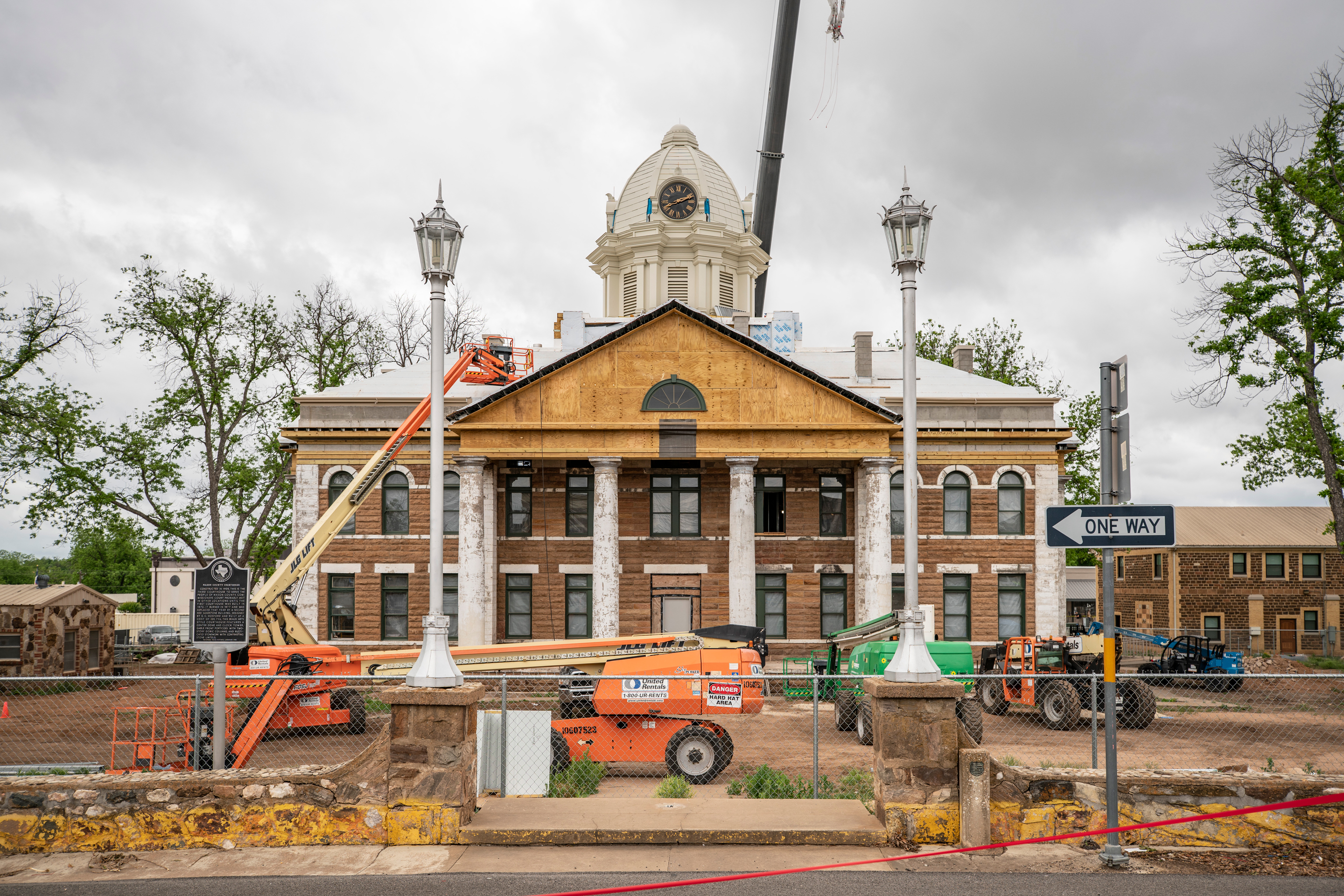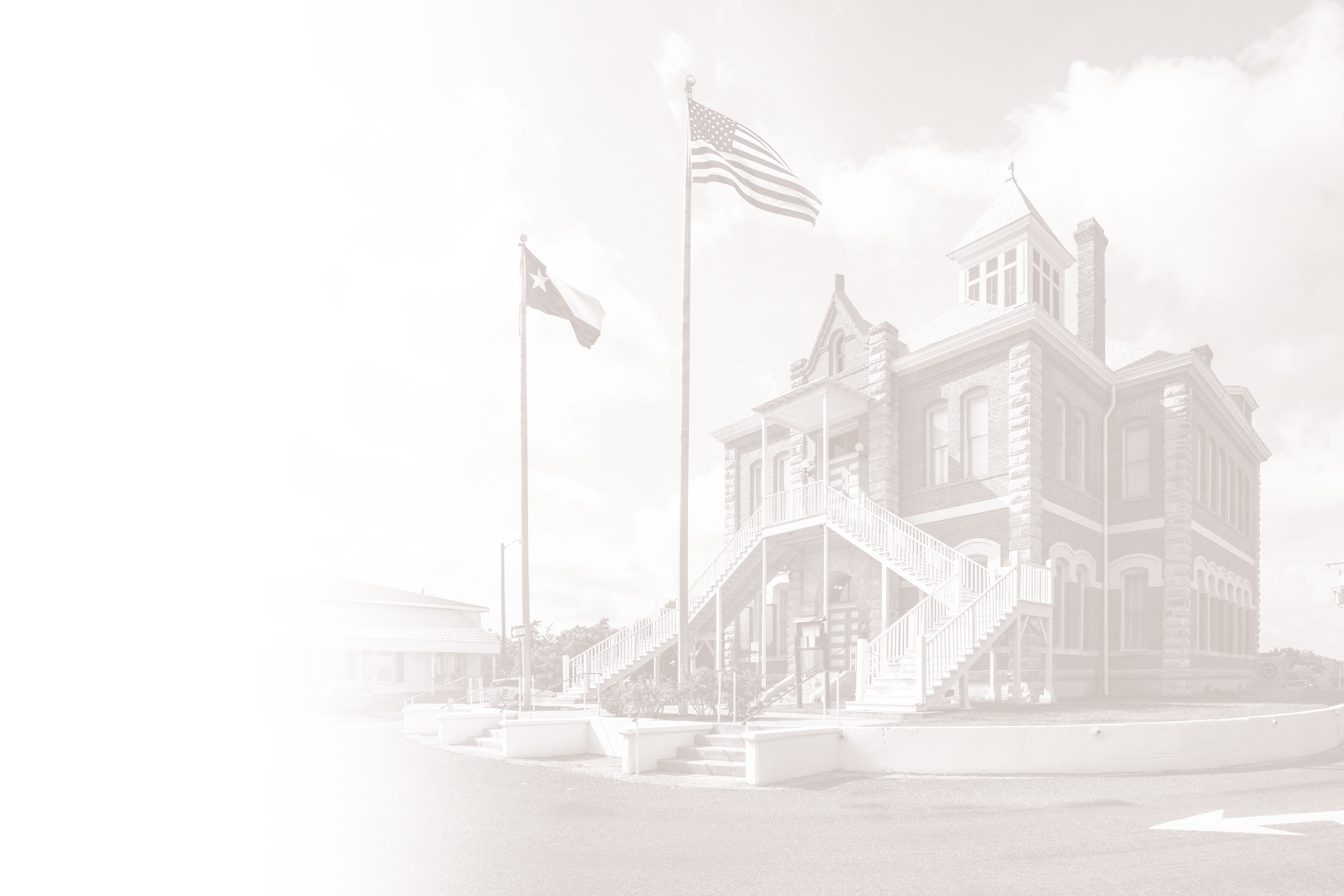Pre-Application Training for Round XIII Now Available
A representative of the county must complete the test and earn a 70 percent or higher before the grant application deadline (May 13). The training and required test at the end will take about 45 minutes to complete. Your score will be automatically submitted to the THCPP Specialist. You can review the slides and retake the test as many times as needed. If you have any trouble, please reach out to Mallory Miller (mallory.miller@thc.texas.gov).
Round XIII Grant Cycle
We are pleased to announce that the 88th Texas Legislature allocated $45 million and increased the grant cap per county for the 2024-25 Round XIII grant cycle of the Texas Historic Courthouse Preservation Program (THCPP). The program may award grants totaling up to $10 million per county toward full restoration construction, the development of architectural construction documents, or to address critical needs that endanger the building or its occupants. The Round XIII grant application materials are now available! Completed digital applications are due by 5 p.m. on Monday, May 13, 2024, and awards will be announced at the Commission’s quarterly meeting on Friday, July 26, 2024.
Grant Application Instructions

Texas has more historic courthouses than any other state. Today more than 240 courthouses still stand that are least 50 years old. About 80 were built before the turn of the 20th century. By the end of that century, most of these structures were significantly deteriorated due to inadequate maintenance, insensitive modifications or weather related damage. The Texas Historical Commission (THC) documented the condition of 50 of the state’s oldest courthouses in the late 1990s and determined that counties lacked the resources to preserve the buildings for future generations.
The Texas Historic Courthouse Preservation Program (THCPP) offers funding to counties through its nationally renowned, award-winning grant program. The THCPP may award up to $10 million to eligible counties through a biannual, competitive application process.
How to Participate in the Courthouse Grant Program
Eligible counties and municipalities own a historic building that currently serves or previously served as the county courthouse and have an approved THCPP preservation master plan. Grant cycles are held every two years following an appropriation for the program by the Legislature, and requests are considered for emergency grants that fund work to protect the building or its users, planning grants to develop construction documents for the full restoration of a historic courthouse and construction grants to fund the full restoration of a historic county courthouse. Counties with a grant-funded fully-restored courthouse are eligible for emergency funding and will compete for funding against other returning applicants. Out-of-cycle funding is considered by the full commission at its Quarterly Meeting to undertake emergency work that is urgent and due to an unanticipated event and to supplement existing construction projects that encounter unforeseen conditions.
In support of the projects completed with state grant funds, the THC also created the Texas Courthouse Stewardship Program, which provides technical assistance and training to county staff on how to maintain their newly restored courthouse.

Is your courthouse in need of historic preservation?
Our nationally recognized and award-winning Texas Historic Courthouse Preservation Program has turned around the trend of disrepair and begun restoring these treasured historic landmarks.
Find out how we can help.Courthouse Preservation Program Resources
Contact Us
If you have questions about the Courthouse Preservation Program, please contact the program administrator using the information listed here.
-
Phone:
+1 512-463-8821 -
Email:
courthouse_program@thc.texas.gov -
Address:
P.O. Box 12276
Austin, TX 78711
United States
